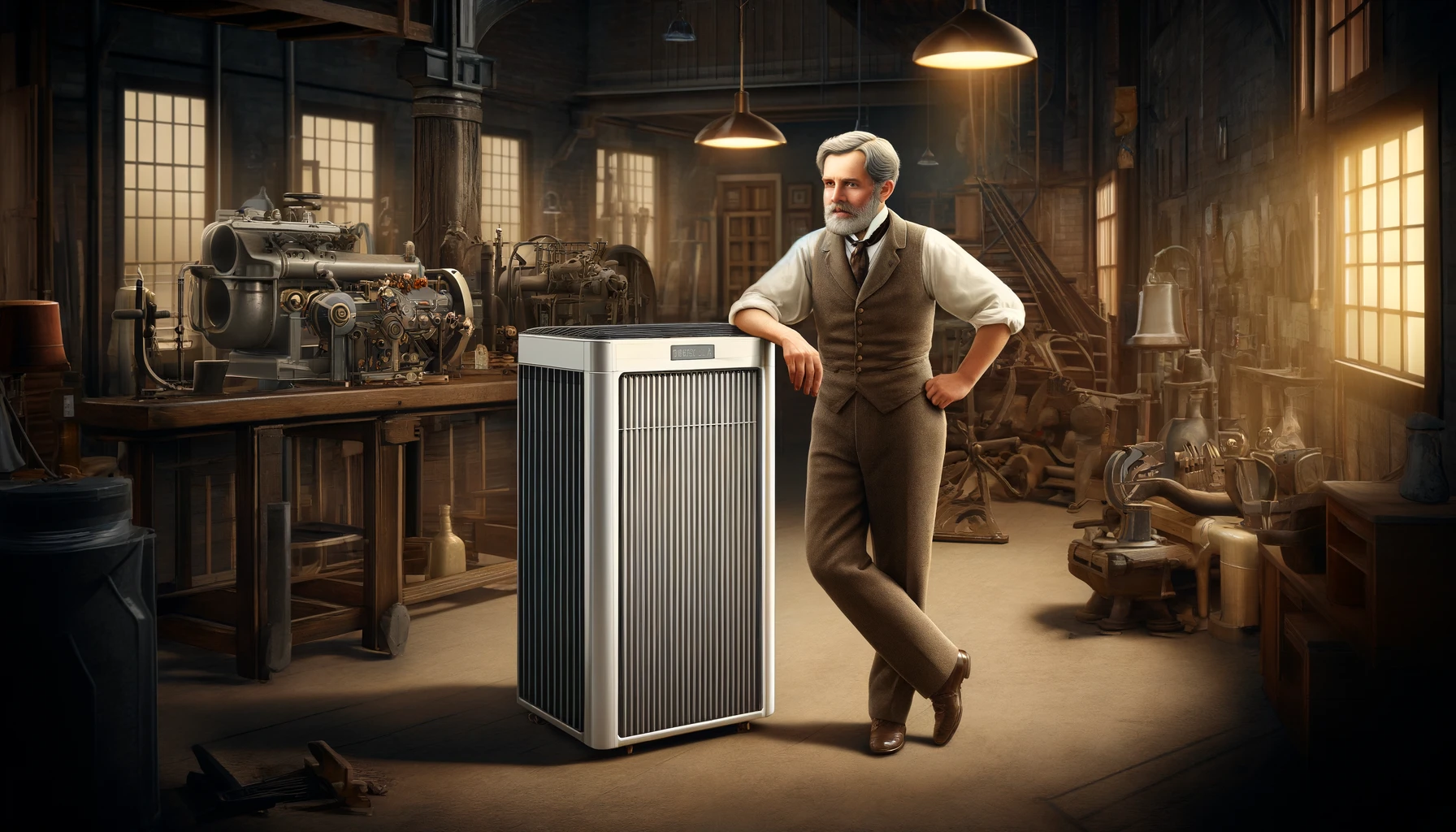In the sweltering summer of 1902, a young engineer named Willis Haviland Carrier stood in a dim, steamy printing plant in Brooklyn, New York, faced with a problem that had plagued industries and comfort for centuries: humidity. It was here, amidst the challenge of controlling air quality for the Sackett-Wilhelms Lithographing & Publishing Company, that Carrier would devise a solution not only pivotal for the printing industry but one that would eventually revolutionize the way people experienced indoor environments around the globe.
The Genesis of Modern Cooling

Carrier’s innovation stemmed from an urgent need to stabilize the air quality in the printing plant. Fluctuating humidity levels were causing the paper to expand and contract, resulting in misaligned colors in the detailed artwork of the periodicals printed there. Carrier, a Cornell University graduate with a keen interest in heating objects by steam, approached the problem with a scientific rigor that was ahead of his time.
The solution he proposed was simple yet groundbreaking: cooling the air by passing it through water-cooled coils to control humidity. This process not only cooled the air but also removed moisture to maintain a consistent humidity level, crucial for keeping the paper dimensions stable. On July 17, 1902, Carrier submitted his drawings for what would become the world’s first modern air conditioning system, marking the birth of an invention that would transform industries and eventually, personal comfort.
The Ripple Effect

Carrier’s invention initially targeted industrial applications, profoundly impacting industries ranging from textiles to pharmaceuticals. By stabilizing the air quality, his invention allowed for more precise manufacturing processes, leading to higher quality products and more efficient production lines.
However, the potential of air conditioning extended far beyond the walls of factories and print shops. In the ensuing decades, Carrier and his engineers continued to refine and adapt the technology for broader uses. The introduction of the “centrifugal chiller” in 1922, a more compact and efficient version of his initial invention, paved the way for air conditioning systems to enter public spaces, such as theaters, department stores, and eventually, homes, changing the architectural landscape and how people lived and worked.
A Cool Reception

The impact of air conditioning on society was profound. In hot climates, it transformed regions that were once considered unbearable for large portions of the year into hubs of economic activity. Cities like Phoenix, Las Vegas, and Miami flourished as air conditioning became more widespread, contributing to significant population growth and economic development.
Moreover, the quality of life improvements were undeniable. Air conditioning has been credited with enabling advances in medical technology, reducing heat-related illnesses, and enhancing overall productivity by creating comfortable working environments. It also democratized comfort, making the hot summer months more bearable for millions.
The Environmental Footprint

As the adoption of air conditioning soared, so did concerns about its environmental impact. The reliance on chemical refrigerants, some of which were harmful to the ozone layer, and the significant energy consumption of cooling systems, have prompted a reevaluation of how we cool our environments. Innovations in energy efficiency, alternative cooling methods, and the development of more eco-friendly refrigerants are part of ongoing efforts to mitigate these concerns, ensuring that the legacy of Carrier’s invention evolves in harmony with environmental sustainability.
From a Brooklyn printing plant to homes and offices around the world, the journey of air conditioning is a testament to human ingenuity and its capacity to transform our external and internal landscapes. Willis Haviland Carrier, dubbed “The Father of Air Conditioning,” could hardly have imagined the full scope of his invention’s impact. Yet, his legacy lives on, not just in the cool comfort of air-conditioned spaces but in the ongoing quest to balance human needs with the health of our planet. As we look to the future, the story of air conditioning continues to unfold, reminding us of the power of innovation to shape the world in profound ways.

